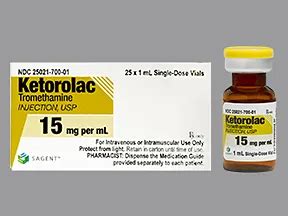Intro
Discover key facts about Ketorolac, a potent NSAID, including its uses, side effects, and interactions, to understand its role in pain management and anti-inflammatory treatment.
Ketorolac is a medication that has been widely used for its potent analgesic and anti-inflammatory properties. It belongs to the class of nonsteroidal anti-inflammatory drugs (NSAIDs) and is often prescribed for short-term management of moderate to severe pain. Despite its effectiveness, there are several aspects of ketorolac that patients and healthcare providers should be aware of to ensure safe and optimal use.
The importance of understanding ketorolac lies in its potential to provide significant pain relief for individuals undergoing surgical procedures or experiencing acute injuries. However, like all medications, it comes with its own set of benefits and risks. Being informed about these aspects can help in making educated decisions regarding its use.
Moreover, the mechanism of action of ketorolac, its benefits, potential side effects, and the conditions it treats are crucial pieces of information for both patients and healthcare professionals. This knowledge not only aids in the proper administration of the drug but also in monitoring for any adverse effects and ensuring patient safety.
Introduction to Ketorolac

Benefits of Ketorolac

Key Benefits
Some of the key benefits of ketorolac include: - Effective pain relief: Ketorolac has been shown to provide potent analgesia, making it a valuable option for patients with moderate to severe pain. - Reduced opioid use: By providing effective pain relief, ketorolac can help reduce the reliance on opioid medications, which is particularly important given the current opioid crisis. - Anti-inflammatory effects: Ketorolac's ability to reduce inflammation can be beneficial in conditions where inflammation contributes to pain and discomfort.Side Effects and Risks

Minimizing Risks
To minimize the risks associated with ketorolac, the following precautions can be taken: - Use the lowest effective dose for the shortest duration necessary. - Monitor renal function and blood pressure regularly. - Avoid use in patients with a history of gastrointestinal bleeding or ulcer disease. - Use with caution in patients with cardiovascular disease.Conditions Treated by Ketorolac

Specific Conditions
Some specific conditions where ketorolac may be used include: - Postoperative pain: Ketorolac can be used to manage pain after surgery, reducing the need for opioids. - Acute injuries: It can be prescribed for pain management in patients with acute injuries, such as fractures or sprains. - Renal colic: Ketorolac's analgesic properties can help in managing the severe pain associated with kidney stones.Administration and Dosage

Dosage Considerations
When administering ketorolac, the following dosage considerations should be kept in mind: - Oral dosage: Typically 10 mg every 4 to 6 hours as needed, not to exceed 40 mg per day. - Intramuscular or intravenous dosage: Usually 15-30 mg every 6 hours as needed, with a maximum daily dose of 120 mg. - Dose adjustment may be necessary for patients with renal impairment or the elderly.Interactions and Contraindications

Important Interactions
Some important interactions to consider when prescribing ketorolac include: - Anticoagulants: Increased risk of bleeding when used concomitantly with anticoagulants like warfarin. - Diuretics: May increase the risk of renal impairment when used together. - Other NSAIDs: Concomitant use can increase the risk of gastrointestinal toxicity and renal impairment.Conclusion and Future Directions

Final Considerations
When considering the use of ketorolac, it is essential to weigh the benefits against the potential risks and to carefully monitor patients for adverse effects. By doing so, healthcare providers can ensure the safe and effective use of ketorolac for pain management.What is ketorolac used for?
+Ketorolac is used for the short-term management of moderate to severe pain. It is often prescribed for postoperative pain, acute injuries, and conditions like renal colic or migraine headaches.
What are the potential side effects of ketorolac?
+Potential side effects of ketorolac include gastrointestinal upset, dizziness, headache, and more serious risks like gastrointestinal bleeding, renal impairment, and increased risk of cardiovascular events.
How should ketorolac be administered and what is the typical dosage?
+Ketorolac can be administered orally, intramuscularly, or intravenously. The dosage depends on the clinical setting and patient condition but typically should not exceed 5 days for oral use or 2 days for intramuscular or intravenous use.
We hope this comprehensive overview of ketorolac has provided valuable insights into its use, benefits, and risks. If you have any further questions or would like to share your experiences with ketorolac, please do not hesitate to comment below. Your feedback and engagement are highly appreciated, and we look forward to continuing the conversation on this important topic. Additionally, if you found this article informative, please consider sharing it with others who might benefit from this information.
